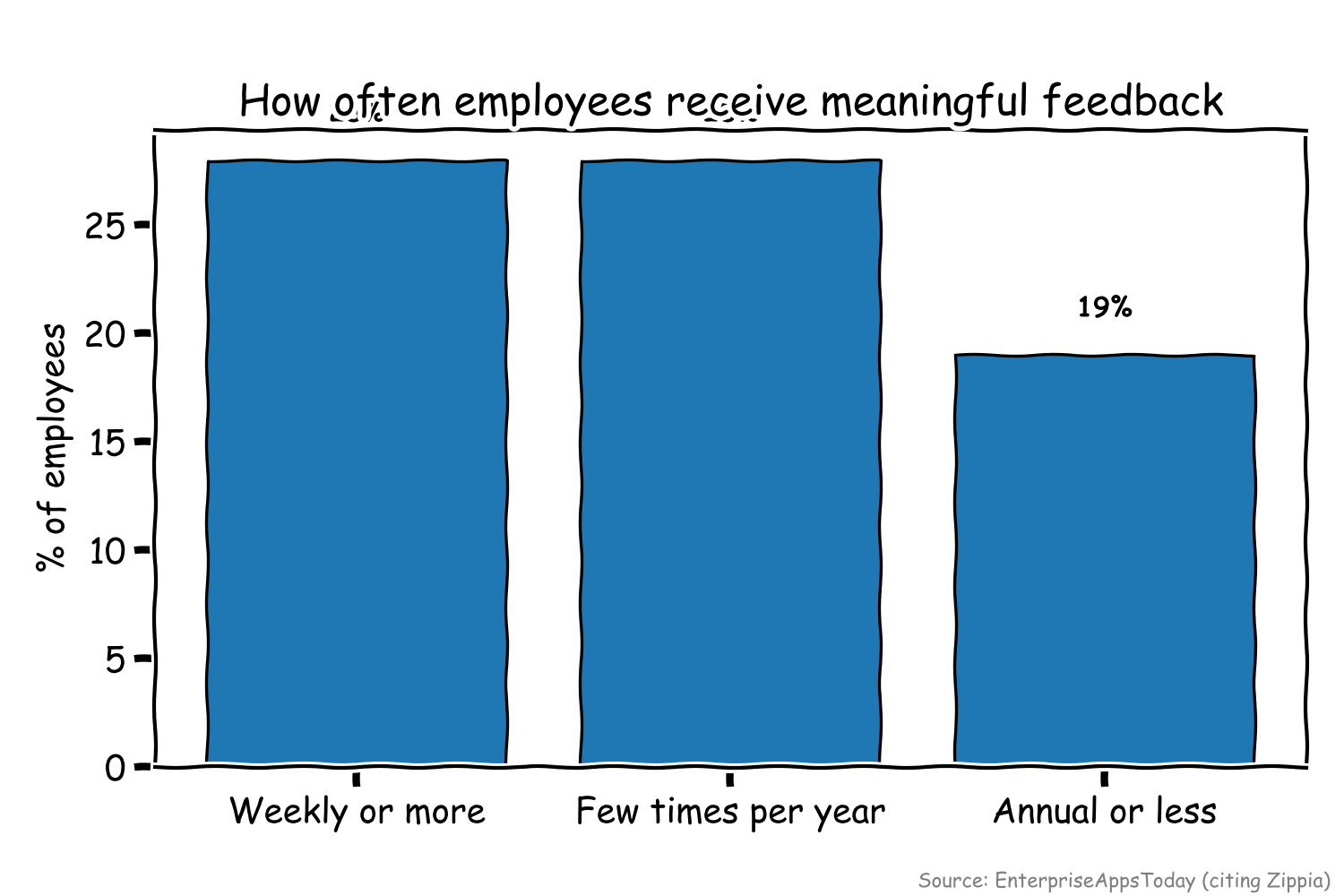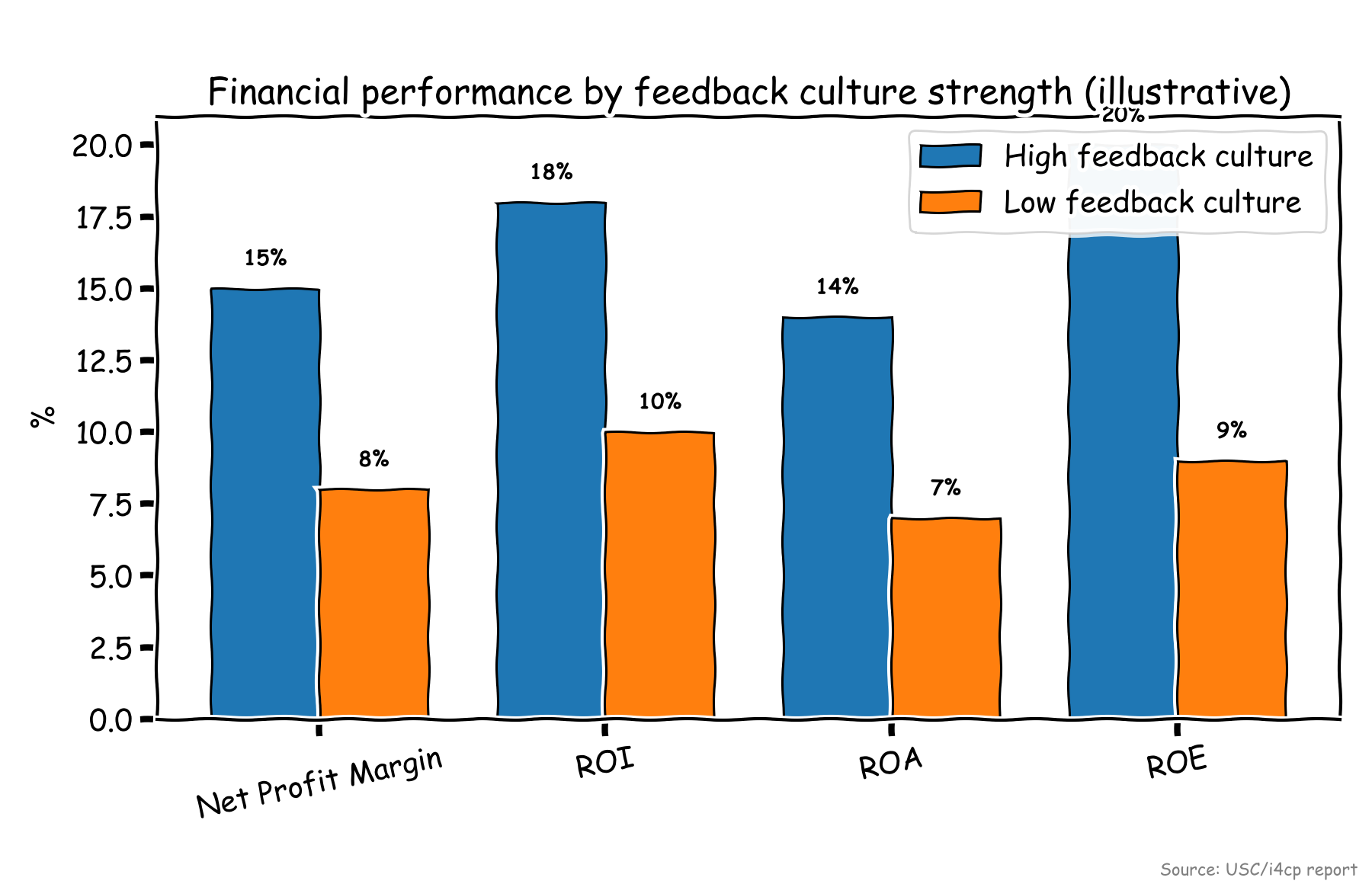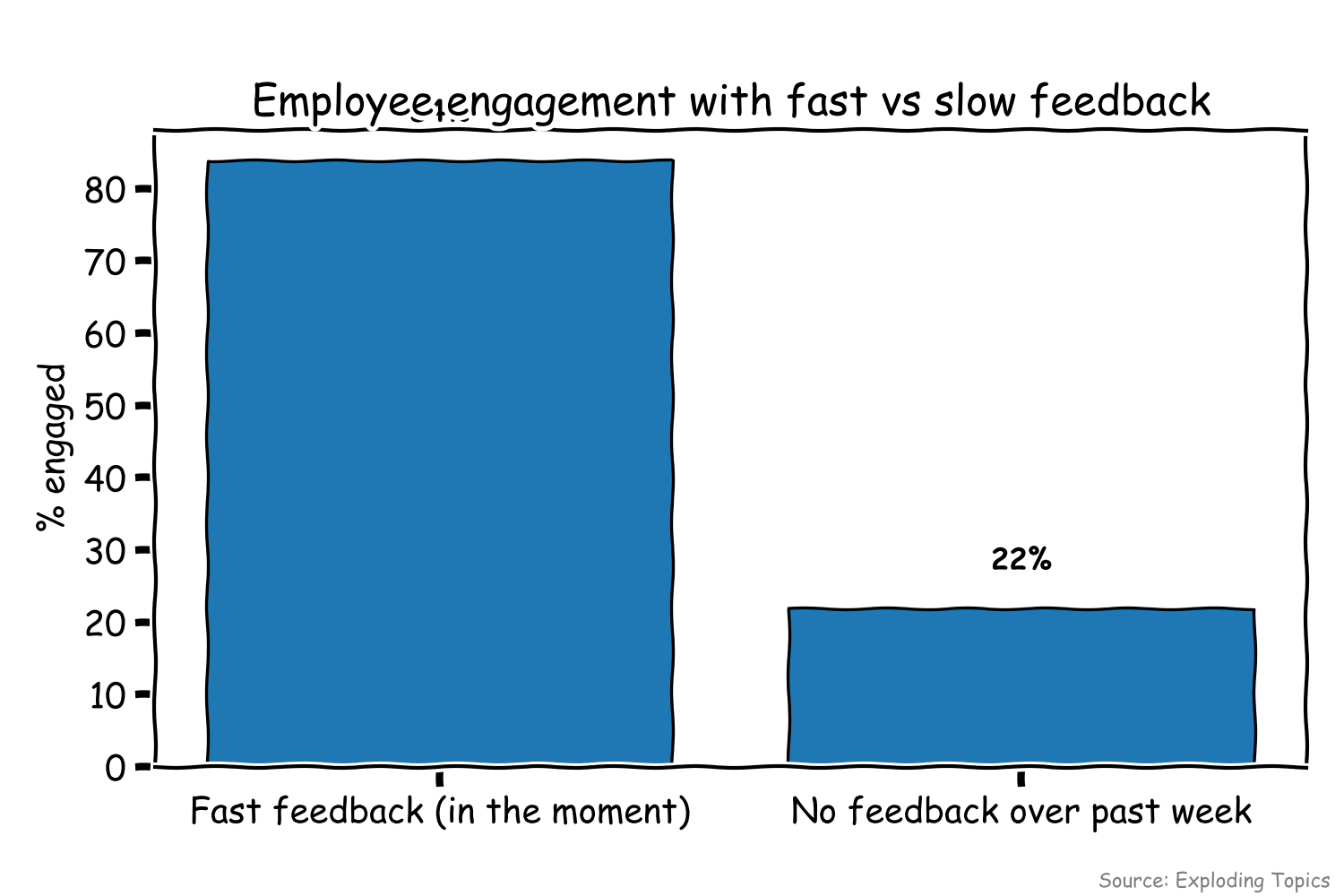I’ve come to believe that feedback is the most underused growth tool in organizations. Most companies talk about “open communication,” but if you ask people when they last received feedback that truly helped them grow, the room usually goes quiet.
The reality is: feedback is uncomfortable. It’s easier to let things slide, to hope people “figure it out,” or to save everything for a yearly performance review. But that’s not feedback-that’s bureaucracy.
Why most feedback cultures fail
The problem isn’t that leaders don’t want to give feedback. It’s that the way feedback is handled in most companies sets it up to fail:
- Too infrequent: Annual or semi-annual reviews come months after the actual behavior. By then, the moment is gone and the feedback lands as abstract, not actionable.
- Too unsafe: Without trust, people fear retaliation, embarrassment, or being labeled “difficult.” The result? Silence.
- Too judgmental: Many managers confuse feedback with evaluation. Telling someone they’re “not proactive enough” is a judgment, not feedback. Useful feedback sounds more like: “In last week’s planning meeting, you stayed quiet until the end. I’d like to see you bring your perspective earlier, because it shapes the conversation.”
This is why so many organizations plateau: they lack the mechanism to learn continuously.
What good feedback looks like
Feedback isn’t about pointing out flaws-it’s about helping people succeed in the future. Two key ideas from the literature stand out:
- Radical Candor (Kim Scott): The balance is to care personally and challenge directly. Too much care without challenge and you drift into “ruinous empathy.” Too much challenge without care and you end up with “obnoxious aggression.”
- Thanks for the Feedback (Stone & Heen): Even poorly delivered feedback can be useful if we learn to separate the signal from the noise. Leaders who train themselves to listen, reflect, and adapt-even when feedback stings-model resilience for the whole team.
In practice, good feedback has three qualities:
- Specific - tied to observable behavior, not personality.
- Timely - delivered close to the event.
- Forward-looking - focuses on what to do next, not just what went wrong.
What the data shows
The numbers underline what many leaders sense intuitively: feedback isn’t just a soft skill-it moves the needle on engagement and performance.
1. Most employees don’t get enough feedback.
Only about 28% of employees receive meaningful feedback weekly, while nearly one in five get it just once a year or less.

Source: EnterpriseAppsToday (citing Zippia)
2. Feedback drives financial performance.
A study of 234 organizations found that those with strong feedback cultures significantly outperformed their peers on net profit margin, ROI, and ROE.

Source: USC/i4cp report
3. Timeliness is everything.
Employees who get feedback quickly after an event are far more engaged. 84% of employees who receive fast feedback report being engaged, compared to a fraction of those who only get it occasionally.

Source: Exploding Topics
The pattern is clear: frequent, timely, and trusted feedback isn’t a “perk”-it’s the difference between high-performing teams and disengaged ones.
How to build a feedback culture (step by step)
Shifting from “feedback deserts” to “feedback cultures” doesn’t happen overnight. Here’s a roadmap I’ve seen work in practice:
Start with trust
Feedback without psychological safety is just criticism. Leaders must show vulnerability first-admitting mistakes, sharing lessons learned-so that others feel safe to do the same.Make it a habit
Don’t wait for the performance cycle. Embed feedback into weekly rituals: retrospectives, 1:1s, even quick check-ins after meetings. A sentence like, “What’s one thing I could have done better in this session?” goes a long way.Model clarity + empathy
Be precise about behaviors: “You interrupted twice during the call” is more useful than “You were rude.” Pair critique with intent: “I’m pointing this out because I know you want to build stronger client relationships.”Leaders go first
The quickest way to normalize feedback is for leaders to ask for it. Not performatively, but with intent to act. When a manager thanks someone for tough feedback and adjusts accordingly, it sets a precedent for the whole team.Keep it actionable
Feedback should be a springboard. “Try letting the team finish before jumping in” is actionable. “Be more collaborative” is vague and demoralizing.
The long-term aspiration
Netflix’s culture, as described in No Rules Rules (Hastings & Meyer), is often held up as the gold standard: feedback flows freely across all levels, and candor is not just tolerated but expected. But here’s the thing: this kind of openness only works in an environment of high trust and high talent density. If you try to copy-paste it too early, it backfires-people experience it as harshness, not honesty.
So think of it as a north star: a place where feedback is woven into the fabric of daily work. Most organizations won’t get there overnight, but every small step builds the muscle.
Where to start tomorrow
- Ask one teammate: “What’s one thing I could do better?”
- Give one piece of feedback today that is specific, kind, and actionable.
- Reflect on your own reactions to feedback-do you deflect, defend, or lean in?
Feedback is not a “nice-to-have.” It’s the engine of personal growth, team trust, and organizational learning.
Sources
- Kim Scott - Radical Candor
- Douglas Stone & Sheila Heen - Thanks for the Feedback
- Reed Hastings & Erin Meyer - No Rules Rules
- Exploding Topics: Employee Feedback Stats
- Zippia: Employee Feedback Statistics
- USC / i4cp: Performance Feedback Culture Drives Business Performance